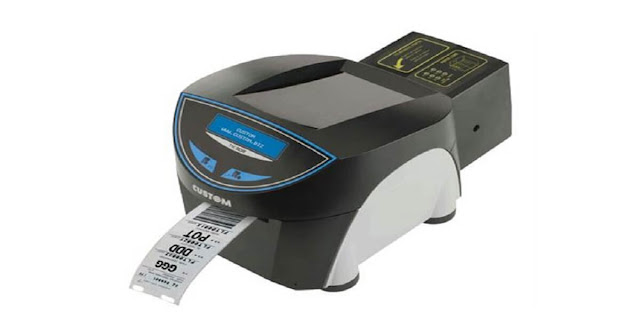Step by step instructions to choose a Laser Bar Code Reader
The most effective method to pick a Laser Bar Code Reader is, when evaluating barcode scanner options, there are several important features to consider.
Hardware
Laser Bar Code Reader usually have three types :
Laser is the most common type of Laser Bar Code Reader. A laser is used to read the reflections of the black and white areas of the bar code.
Linear Imaging laser scanners
linear imaging barcode scanners only read 1D barcodes, but by taking an image of the barcode and analyzing the information in the image.
2D Area Imaging Device scanners
These scanners work like linear imaging machines, except they can read stacked and 2D barcodes. Scan barcodes from any direction.
The type of product you need to scan and the type of barcode you use will determine the type of device you need. For example, if you're using UPC codes, Laser Bar Code Reader can do the trick. If you are using stacked barcodes, you should choose a scanner with compatible hardware. Also, if you maintain inventory in challenging environments such as industrial warehouses or manufacturing facilities, it may be worth investing in an industrial barcode scanner.
Programming Requirements
Today Laser Bar Code Reader do not require any specific software or drivers to be installed in order to send barcode information to your computer. A barcode scanner typically sends data from a barcode to a computer in the same way a keyboard sends keystrokes.
However, there are Laser Bar Code Reader apps available for PCs that can read and decode barcode images. For example, Quick Book Commerce lets you retrieve inventory using a barcode scanner (more on that later). Most importantly, when purchasing a barcode scanner, make sure it is compatible with the software you use for inventory management.
Mobility
Keep in mind that if you want the portability of a handheld barcode scanner, you should look for a device with wireless connectivity. Also keep in mind that not all wireless Laser Bar Code Reader are created equal. Some work without power constraints, but may not transmit data wirelessly to a central database. Choose a Bluetooth-enabled barcode scanner when you need to be able to capture and update data on the go.
5 Best Barcode Reader for Inventory Management in 2022
The ease of use and utilitarian design of barcode scanners can be daunting for those who want a basic solution. It features automatic scanning at scanning speeds of up to 100 scans per second.
Good point:
- Low price
- Easy to set up
Negative:
- Limited function
- No wireless capability
Best Wireless Barcode Reader:
If you need to scan items on the go, this wireless barcode scanner offers solid indoor and outdoor performance. Installation is straightforward, just plug it into his USB port on your computer.
Good point:
- Wireless scan
- 2 pairing modes
Store up to 100,000 barcodes offline
Negative:
- Rather slow response time
Best USB Barcode Reader:
This barcode scanner is very easy to install. It has a sleek design, can scan 100 times per second, and has excellent decoding capabilities.
Good point:
- Easy installation process
- Compatibility
It is one of the only barcode scanners that can survive a 1.5m drop onto concrete.
Negative:
- Slightly more expensive than similar models
Best Bluetooth Barcode Reader:
The scanner features a practical 2-in-1 design that allows wireless Bluetooth or wired connectivity. Supports almost all types of barcodes including UPC/EAN, Code39, Coda Bar, ISBN, ISSN.
Good point:
- 2 in 1 connection
- Long lasting battery
- Fast scan speed
Negative:
- More expensive than some other models
For users who need Laser Bar Code Reader in harsh environments and extreme temperatures, such as dust-prone manufacturing facilities and cold storage, this barcode scanner has all the features you would expect from a quality barcode scanner. That, yet it is additionally solid.
Also read: Importance of Desktop Barcode Printer For Your Business




Comments
Post a Comment